
Find Help
More Items From Ergsy search
-

Can lifestyle changes help manage Carpal Tunnel Syndrome?
Relevance: 100%
-

Carpal Tunnel Syndrome
Relevance: 100%
-
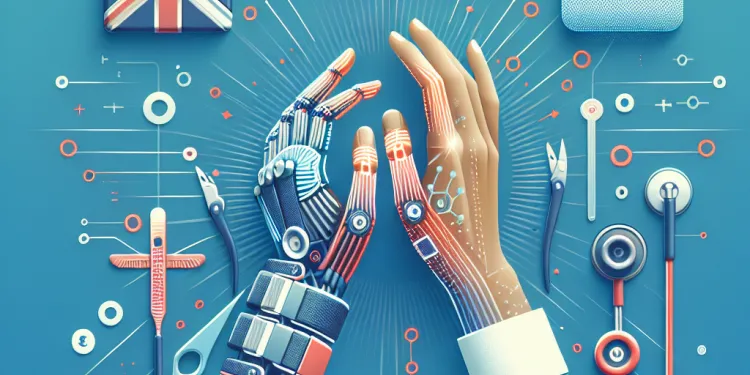
Is Carpal Tunnel Syndrome covered by the NHS?
Relevance: 95%
-

What causes Carpal Tunnel Syndrome?
Relevance: 93%
-

What is Carpal Tunnel Syndrome (CTS)?
Relevance: 91%
-

How is Carpal Tunnel Syndrome diagnosed?
Relevance: 88%
-
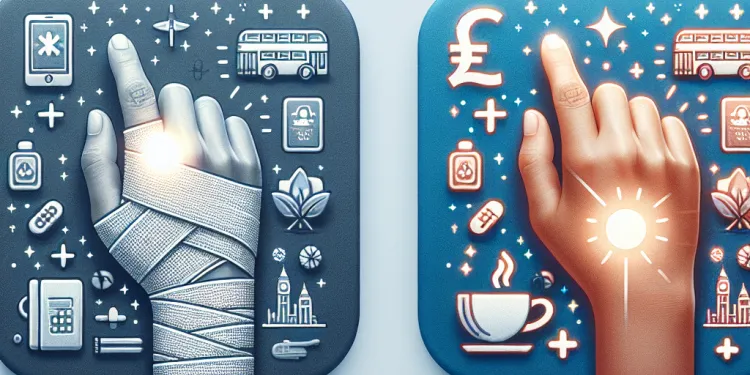
Can Carpal Tunnel Syndrome recur after treatment?
Relevance: 88%
-

How can I prevent Carpal Tunnel Syndrome?
Relevance: 87%
-
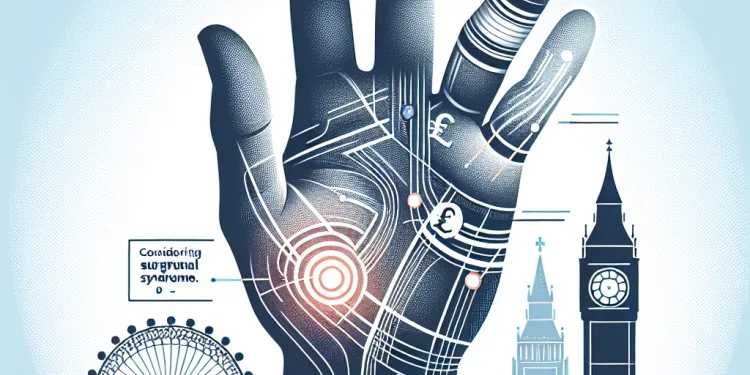
When should I consider surgery for Carpal Tunnel Syndrome?
Relevance: 87%
-
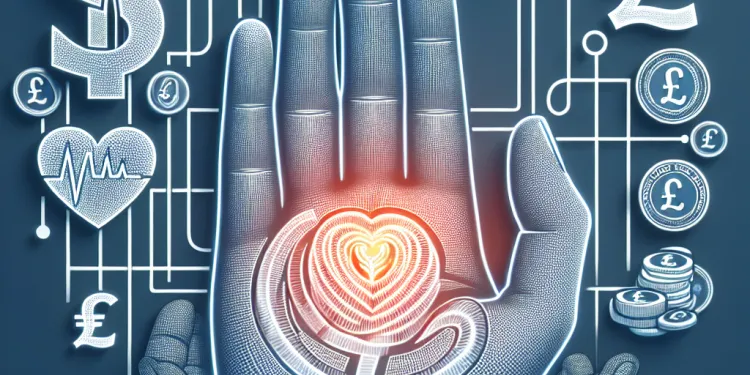
Are there any alternative treatments for Carpal Tunnel Syndrome?
Relevance: 85%
-

What does Carpal Tunnel Syndrome surgery involve?
Relevance: 83%
-

Are there specific exercises that can help with Carpal Tunnel Syndrome?
Relevance: 82%
-
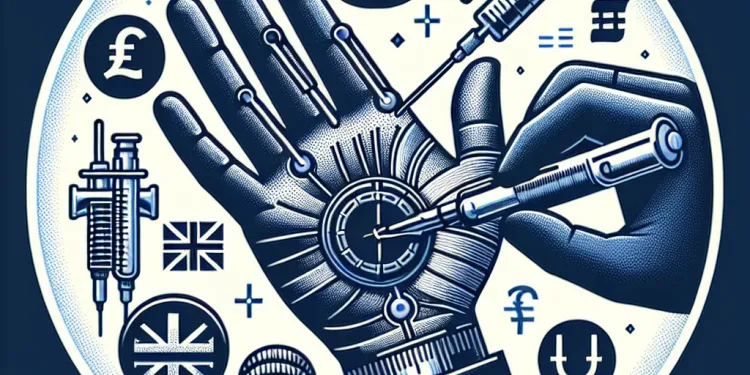
What non-surgical treatments are available for Carpal Tunnel Syndrome?
Relevance: 81%
-
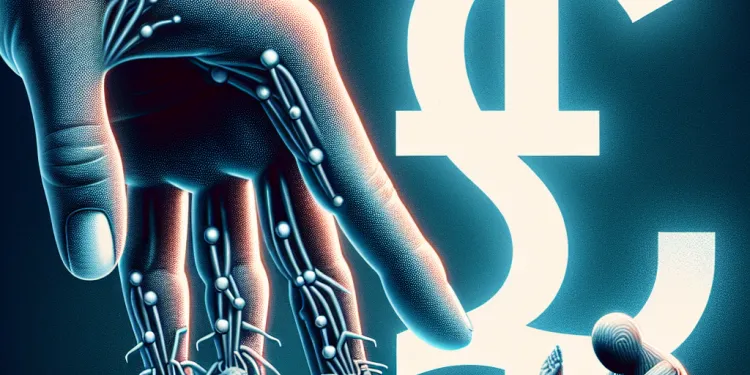
What are the common symptoms of Carpal Tunnel Syndrome?
Relevance: 78%
-
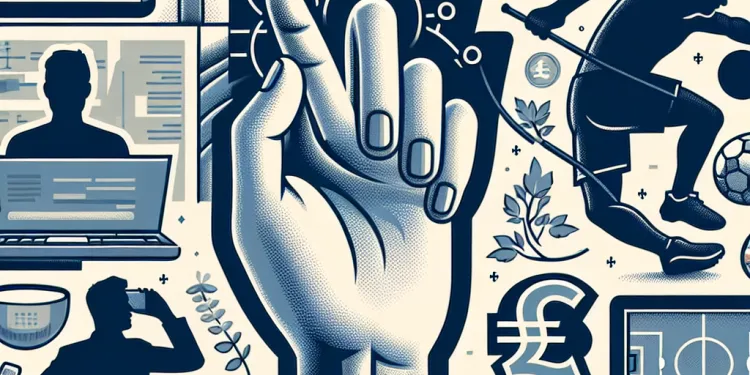
Can I work or continue sports activities if I have Carpal Tunnel Syndrome?
Relevance: 75%
-
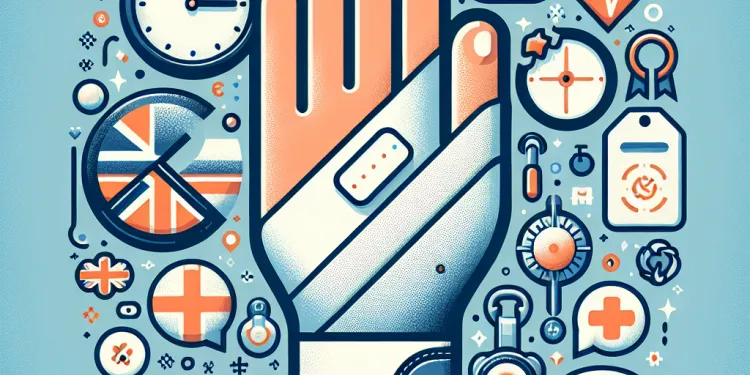
What is the recovery time after Carpal Tunnel Surgery?
Relevance: 61%
-

Can chronic fatigue syndrome be managed with lifestyle changes?
Relevance: 38%
-

Can lifestyle changes help with postnatal depression?
Relevance: 30%
-

Are there lifestyle changes recommended with Baxdrostat?
Relevance: 29%
-
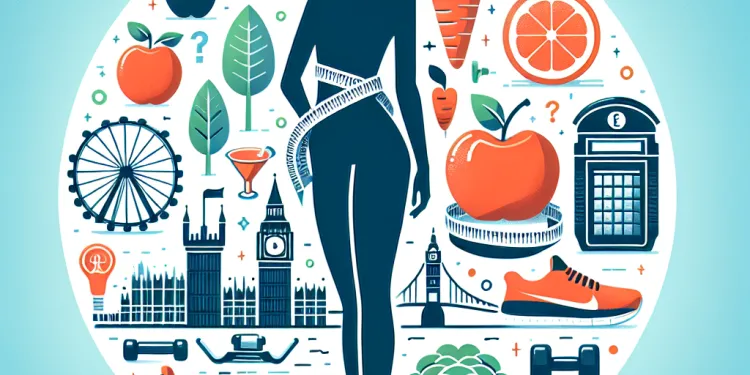
Do lifestyle changes need to accompany Ozempic for weight loss?
Relevance: 29%
-
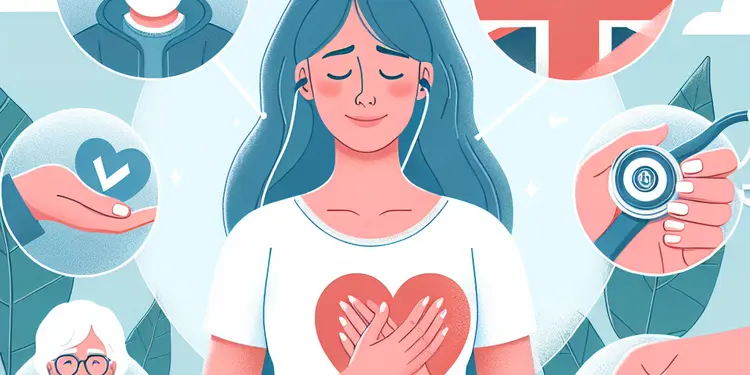
Is chronic fatigue syndrome contagious?
Relevance: 29%
-

Can diet or lifestyle changes prevent appendicitis?
Relevance: 29%
-

Can lifestyle changes help manage ADHD?
Relevance: 29%
-

What is Cushing's syndrome?
Relevance: 29%
-

Can lifestyle changes help prevent testicular cancer?
Relevance: 28%
-

What is chronic fatigue syndrome?
Relevance: 28%
-

What is complex sleep apnea syndrome?
Relevance: 27%
-
Can lifestyle changes also help prevent colorectal cancer?
Relevance: 27%
-

What role do lifestyle changes play in managing psoriasis?
Relevance: 27%
-
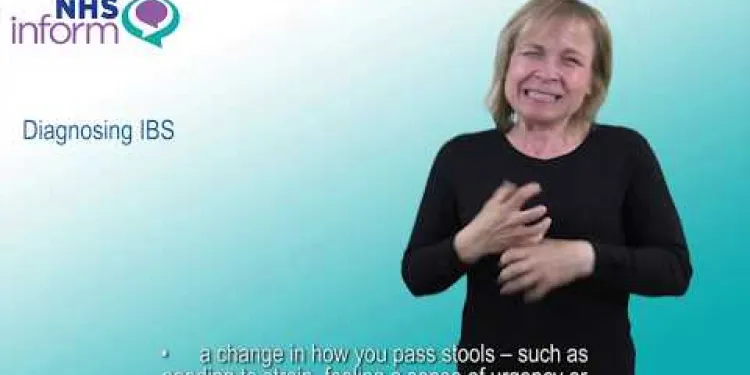
Diagnosing irritable bowel syndrome (IBS)
Relevance: 26%
-

Can lifestyle changes impact motor neurone disease progression?
Relevance: 26%
-

Munchausen's syndrome | NHS
Relevance: 26%
-

Can lifestyle changes help manage Huntington's disease?
Relevance: 26%
-

Turner syndrome: Beyond the classic XO phenotype
Relevance: 25%
-

Prader-Willi Syndrome | NHS
Relevance: 25%
-

About irritable bowel syndrome (IBS)
Relevance: 25%
-
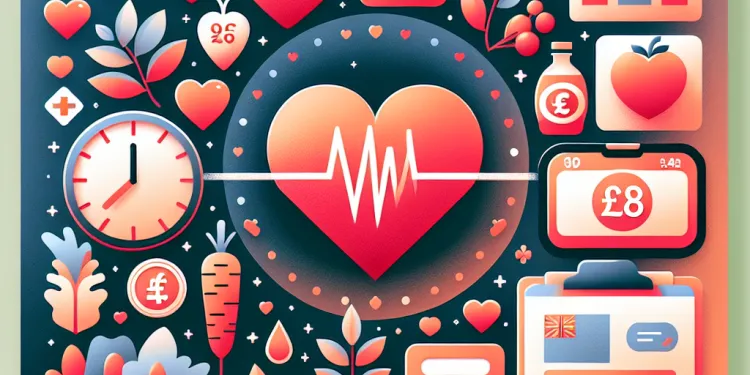
What lifestyle changes can lower blood pressure?
Relevance: 25%
-
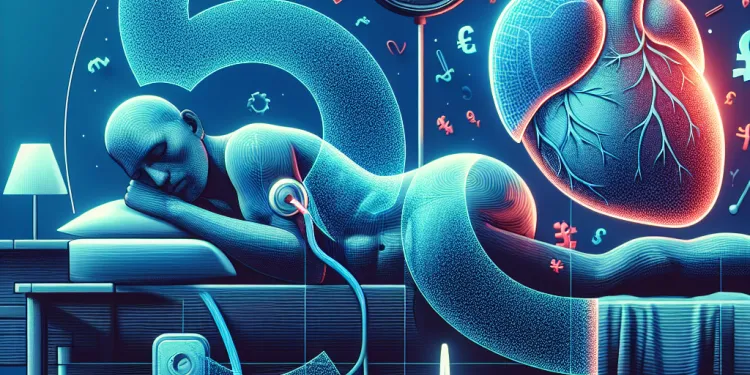
What is complex sleep apnea syndrome?
Relevance: 25%
-

Can lifestyle changes help manage pain and fever during pregnancy?
Relevance: 25%
-
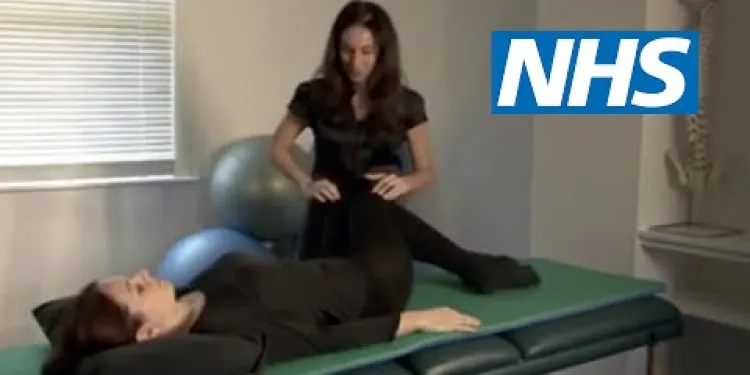
Exercises for sciatica: piriformis syndrome | NHS
Relevance: 24%
Understanding Carpal Tunnel Syndrome
Carpal Tunnel Syndrome (CTS) is a condition caused by compression of the median nerve as it travels through the carpal tunnel in the wrist. This nerve compression can lead to symptoms such as pain, numbness, tingling, and weakness in the hand and arm. CTS is a common ailment that affects many people in the UK, particularly those whose jobs or hobbies involve repetitive hand and wrist movements. While surgical intervention is often considered for severe cases, many individuals find relief through lifestyle changes and preventive measures.
Importance of Early Intervention
Addressing symptoms of Carpal Tunnel Syndrome early can prevent the condition from progressing to a more severe stage. Early intervention through simple lifestyle modifications can significantly reduce symptoms and improve quality of life. For those with mild to moderate symptoms, these changes may offer a non-invasive and cost-effective way to manage and alleviate discomfort.
Ergonomic Adjustments
One of the most effective lifestyle changes is to adopt ergonomic practices at work and in daily activities. Ensuring that your workspace is set up to support natural wrist and arm positions is crucial. Consider using a keyboard and mouse that are designed to reduce strain on the hands and wrists. Adjusting the height of your chair and work surface can also help maintain a neutral wrist position, minimizing pressure on the median nerve.
Regular Stretching and Exercises
Incorporating regular stretching and strengthening exercises into your daily routine can support the muscles and tendons in the hands and wrists. Simple exercises such as wrist stretches, hand clenches, and finger dexterity exercises can enhance circulation, reduce tension, and improve overall hand function. Engaging in these exercises several times a day can be an effective way to manage symptoms and prevent flare-ups.
Adopting Healthier Habits
Maintaining a healthy lifestyle can have a positive impact on CTS management. Keeping an ideal body weight, staying physically active, and following a balanced diet can reduce the risk of developing conditions such as obesity and diabetes, which are risk factors for CTS. Additionally, quitting smoking can improve blood flow and nerve health, potentially alleviating symptoms.
Using Wrist Support
Wearing a wrist splint or brace, particularly at night, can help keep the wrist in a neutral position and reduce pressure on the median nerve. Many people find that symptoms improve significantly when wearing a splint consistently during sleep or while performing activities that involve repetitive wrist movements. It is crucial to ensure that the splint is correctly fitted to provide adequate support without being too restrictive.
Consulting Healthcare Providers
While lifestyle changes can be beneficial, it is important to consult with healthcare providers for a comprehensive diagnosis and management plan. A doctor, physiotherapist, or occupational therapist can provide personalised advice and recommend specific strategies based on individual needs. In some cases, medical interventions such as corticosteroid injections or surgery may still be necessary if lifestyle modifications alone do not alleviate the symptoms.
Understanding Carpal Tunnel Syndrome
Carpal Tunnel Syndrome (CTS) happens when a nerve in the wrist gets squeezed. This nerve is called the median nerve. When it gets squeezed, you can feel pain, numbness, tingling, or weakness in your hand and arm. CTS is common for many people in the UK. It often affects people who use their hands and wrists a lot for work or hobbies. Sometimes, doctors do surgery for bad cases, but many people can feel better by changing their daily habits.
Why Early Help is Important
Getting help for Carpal Tunnel Syndrome early can stop it from getting worse. Simple changes in how you live every day can help a lot. They can make you feel better and improve how you live. For people who have mild symptoms, these changes can help without needing to go to the hospital.
Changing How You Work
Changing how you do things can help your hands and wrists feel better. Try to set up your work area so your wrists and arms are comfortable. You can use a special keyboard or mouse to stop your hands and wrists from hurting. Also, make sure your chair and desk are at the right height to keep your wrists straight. This helps protect the nerve in your wrist.
Regular Stretching and Exercises
Doing simple exercises every day can help the muscles and tendons in your hands and wrists. You can do wrist stretches, hand clenches, and finger exercises. These exercises help your blood move, ease tension, and improve how your hands work. Doing these exercises a few times a day can help manage symptoms and stop them from coming back.
Living Healthy
Living a healthy life can help manage CTS. Try to keep a good weight, move around often, and eat a balanced diet. This can lower the chance of getting other problems like obesity and diabetes, which can make CTS worse. If you smoke, stopping smoking can help your blood flow better and your nerves stay healthy.
Using Wrist Support
Wearing a wrist splint or brace, especially at night, can help your wrist stay in a straight position. This can reduce the pressure on the nerve in your wrist. Many people feel better when they use a splint while sleeping or doing activities that stress the wrist. It is important to make sure the splint fits correctly and is not too tight.
Talking to Health Experts
While changing habits can help, it's important to talk with health experts for a full check-up and plan. A doctor, physiotherapist, or occupational therapist can give advice just for you. They might also suggest other treatments like injections or surgery if changes in habits don’t help enough.
Frequently Asked Questions
What is Carpal Tunnel Syndrome (CTS)?
Carpal Tunnel Syndrome is a condition caused by compression of the median nerve as it travels through the wrist, leading to numbness, tingling, and weakness in the hand.
Can lifestyle changes help manage Carpal Tunnel Syndrome?
Yes, making certain lifestyle changes can help alleviate the symptoms of Carpal Tunnel Syndrome and prevent further damage.
What are some common lifestyle changes to help manage CTS?
Common lifestyle changes include ergonomic adjustments, regular breaks from repetitive tasks, proper hand and wrist positioning, and exercises to strengthen and stretch the wrist and hand.
How does ergonomic adjustment help with CTS?
Ergonomic adjustments, like using a keyboard and mouse that reduce wrist strain, can minimize the pressure on the carpal tunnel and help alleviate symptoms.
How important is taking breaks in managing CTS?
Taking regular breaks from activities that strain the wrist can prevent further irritation and allow the median nerve to recover.
What types of exercises are recommended for CTS?
Exercises focusing on stretching and strengthening the wrist, hand, and fingers can improve flexibility and reduce pressure on the median nerve.
Can weight management affect CTS symptoms?
Yes, maintaining a healthy weight can reduce the risk of developing or worsening CTS, as excess weight can increase pressure on the wrist.
Does avoiding certain activities help with CTS?
Avoiding or modifying activities that require repetitive movements or awkward hand positions can help reduce stress on the carpal tunnel.
Can stress management techniques alleviate CTS symptoms?
Yes, stress management techniques such as yoga and meditation can help reduce muscle tension and promote better posture, alleviating CTS symptoms.
Is wearing a wrist splint advisable for managing CTS?
Yes, wearing a wrist splint, especially at night, can keep your wrist in a neutral position and reduce pressure on the median nerve.
How does posture affect Carpal Tunnel Syndrome?
Good posture helps align the wrists and forearms properly, reducing strain on the wrist.
Can dietary changes help with CTS?
Proper nutrition can support nerve health. Some find relief by including anti-inflammatory foods or avoiding certain irritants, but specific dietary changes should be discussed with a healthcare provider.
Is it beneficial to consult a physical therapist for CTS?
Yes, a physical therapist can provide tailored exercises and ergonomic advice to help manage CTS.
What role does quitting smoking play in managing CTS?
Quitting smoking can improve blood flow and reduce inflammation, which may help alleviate CTS symptoms.
Can using voice recognition software help manage CTS?
Yes, using voice recognition software can reduce the need for repetitive typing, thereby minimizing wrist strain.
Does keeping hands warm help with CTS?
Keeping hands warm can improve blood flow and flexibility, reducing stiffness and discomfort in the wrist.
How does reducing caffeine intake help with CTS?
Reducing caffeine intake may help decrease inflammation and muscle tension, potentially easing CTS symptoms.
Can alternative therapies play a role in managing CTS?
Some people find relief through acupuncture or chiropractic adjustments, but it’s important to consult with a healthcare provider before starting alternative therapies.
Are there any specific tools that can help manage CTS during daily tasks?
Ergonomic tools like split keyboards, padded grips, and cushioned mouse pads can help reduce strain on the wrist.
How soon can lifestyle changes start affecting CTS symptoms?
Some people may notice improvements within a few weeks of implementing lifestyle changes, though the timeline can vary based on individual circumstances and severity of CTS.
What is Carpal Tunnel Syndrome (CTS)?
Carpal Tunnel Syndrome, or CTS, is when your hand hurts or feels numb. It happens because a nerve in your wrist is being squeezed. This makes it hard to use your hand.
To help, you can wear a special wrist brace. It keeps your wrist straight and gives it a rest. Sometimes, a doctor might help too. They can show you exercises or talk about other treatments.
Carpal Tunnel Syndrome happens when a nerve in your wrist gets squeezed. It can make your hand feel numb, tingly, and weak.
Can changing how you live help with Carpal Tunnel Syndrome?
Carpal Tunnel Syndrome makes your hand and wrist hurt or feel numb. Here are some simple changes that might help:
- Take breaks when using your hands a lot. Rest them often.
- Keep your hands and wrists in a comfy position.
- Do gentle hand and wrist exercises.
- Stay healthy by eating well and moving your body.
If it still hurts, talk to a doctor. They can help you feel better.
Yes, changing some things in your daily life can help with Carpal Tunnel pain and stop it from getting worse.
How can you change your daily habits to help with CTS?
Here are some simple changes you can make to help your hands and wrists feel better:
- Set up your workspace so it feels comfortable.
- Take regular breaks when doing the same thing over and over.
- Hold your hands and wrists the right way.
- Do some exercises to make your hands and wrists stronger and more flexible.
Try using reminders or timers to remember to take breaks. You can also use apps or videos for gentle exercises.
How can making changes help with CTS?
CTS means Carpal Tunnel Syndrome. It can make your hand hurt or feel numb.
Making changes to how you sit or work can help. Here are some tips:
- Good Sitting: Sit with your back straight and feet on the ground.
- Right Tools: Use tools that fit your hands well.
- Take Breaks: Rest your hands often.
You can also use things like:
- Padded Mouse Pads: These can help your wrist.
- Wrist Supports: These help keep your hands in a good position.
Changing the way you work can make your hands feel better!
Using a comfy keyboard and mouse can help your wrists feel better. This can stop wrist pain and keep you from hurting the carpal tunnel.
Why is it important to take breaks when you have CTS?
Taking breaks is very important if you have CTS (Carpal Tunnel Syndrome). It helps your hands rest and feel better.
If you use your hands a lot, remember to stop and rest them often. This can help your hands not hurt as much.
Try this:
- Take a break every hour. Rest your hands.
- Stretch your fingers and wrists gently.
- If you have a computer job, try to look away from the screen for a minute or two.
You can also use tools to help, like reminders on your phone to tell you when to take a break.
Take breaks often from things that make your wrist tired. This helps your wrist feel better and gives it time to heal.
What exercises help if you have CTS?
If your hands hurt because of CTS (Carpal Tunnel Syndrome), some exercises can help.
- Wrist Stretch: Hold your hand out with fingers straight. Use your other hand to gently press your hand back towards you. Hold for a few seconds.
- Finger Bends: Make a fist, then open your hand and spread your fingers. Do this a few times.
- Shake It Out: Gently shake your hands like you are trying to dry them.
Ask an adult or a therapist to show you how to do these exercises safely.
Using voice-to-text tools or picture exercises can help you understand better. You can also set reminders to do these exercises every day.
Doing special exercises can help make your wrist, hand, and fingers stronger and stretchier. This can help your hand feel better and not press on the nerve inside it.
Can losing or gaining weight change CTS pain?
CTS pain means your hands or wrists hurt. Sometimes this happens because of extra weight. Losing extra weight might help the pain get better.
To help, you can:
- Eat healthy foods
- Exercise regularly
- Speak to a doctor or nurse
Keeping a healthy weight is good for your wrists. If you weigh too much, it can push on your wrist and make problems like Carpal Tunnel Syndrome (CTS) worse.
Can stopping some things help with CTS?
CTS means Carpal Tunnel Syndrome. This is when your hand or wrist hurts or feels numb.
Stopping some things might help with CTS. Try these tips:
- Rest your hand and wrist.
- Avoid doing things that hurt your hand.
- Take breaks if you use your hand a lot.
- Try using a wrist splint to keep your hand straight.
If your hand still hurts, talk to a doctor. They can help make it better.
Try to change or do less of the things that make you move your hands in the same way over and over, or in a way that feels uncomfortable. This can help your wrists feel better.
Can ways to feel less stress help with CTS pain?
Yes, doing things like yoga and meditation can help you feel less stressed. This can make your muscles less tight and help you stand or sit better. This might make your hands feel better if you have CTS.
Some tips to help:
- Try deep breathing to relax.
- Use a yoga video made for beginners.
- Meditate for a few minutes every day.
Should I wear a wrist splint for CTS?
CTS means Carpal Tunnel Syndrome. It can make your hand hurt or feel weak.
A wrist splint is a support that keeps your wrist straight. Wearing it can help your hand feel better.
If you have CTS, wearing a wrist splint may help you. It is good to wear it at night when you sleep.
Helpful tips:
- Talk to a doctor about wearing a wrist splint.
- Try to rest your hand often.
- Do simple exercises for your hand and wrist.
Yes, wearing a wrist brace, especially when you sleep, can help. It keeps your wrist straight, which takes pressure off the nerve in your wrist.
How does posture affect Carpal Tunnel Syndrome?
Big idea: The way we hold our body can make Carpal Tunnel Syndrome worse.
More about it:
- Carpal Tunnel Syndrome: This is when your hand and wrist hurt because a big nerve is squeezed in the wrist.
- Posture: This means how you sit or stand.
- Why it matters: If you bend your wrists too much or sit the wrong way, it can hurt your wrists more.
Helpful tips:
- Try to keep your wrists straight.
- Sit up tall when using a computer.
- Take breaks and shake out your hands often.
Tools:
- Special keyboards and mouse can help.
- Look for wrist rests or pads to use while typing.
Remember: Good posture helps your body feel better!
Standing or sitting up straight helps your wrists and arms line up the right way. This can stop your wrists from hurting.
Can changing what you eat help with CTS?
CTS means Carpal Tunnel Syndrome. It's when your wrist hurts and feels tingly.
Eating healthy foods might help. Try eating more fruits and vegetables and less junk food. Drinking lots of water is good too.
Ask your doctor for advice. They can give you tips on what to eat.
Using pictures or videos can also help you understand better.
Eating the right foods can help keep nerves healthy. Some people feel better by eating foods that reduce swelling. Others feel better by not eating things that make nerve pain worse. It's important to talk to a doctor before changing what you eat.
Should you see a physical therapist for wrist pain?
If your wrist hurts, seeing a physical therapist can help. They know how to make your wrist feel better. You can try using tools like soft wrist splints or squeeze balls to help at home.
Yes, a physical therapist can give you special exercises and tips to help with CTS. CTS stands for carpal tunnel syndrome.
The therapist can show you ways to make your body feel better. They can tell you how to sit or stand that is more comfortable for you.
There are tools that can help too. Therapists might suggest using certain things to make it easier to do everyday tasks.
How does stopping smoking help with CTS?
CTS is short for Carpal Tunnel Syndrome, which is a problem with your hand and wrist. Stopping smoking can help make it better.
- Smoking can make your body heal slower.
- When you stop smoking, your blood flows better. This can help your hand and wrist feel better.
- Ask a doctor or nurse for help to stop smoking. They can give you tips and tools to quit.
Some tools to help you stop smoking are:
- Nicotine patches or gum.
- Support groups or talking to someone who understands.
- Apps that remind and encourage you every day.
Stopping smoking can help your blood move better. It can also make your body less sore. This might make your CTS feel better.
Can talking to the computer help with hand pain?
Yes, using voice software can help. It lets you talk instead of typing. This can stop your wrists from hurting.
Can keeping your hands warm help with CTS?
CTS stands for Carpal Tunnel Syndrome. It’s when your hand might hurt or feel tingly.
Wearing gloves or using a warm cloth can help keep your hands warm.
This warmth can help your hands feel better and hurt less.
You can also try taking breaks to rest your hands.
If your hands still hurt, you should talk to a doctor.
Keeping your hands warm is important. It helps blood move better and makes your hands and wrists less stiff. This can make your wrists hurt less.
How does drinking less caffeine help with CTS?
CTS is short for carpal tunnel syndrome. It can make your hand feel tingly or hurt.
Drinking less caffeine can help. Here’s how:
- Caffeine can make nerves more sensitive. Reducing it might help calm down those nerves.
- Try drinking water or herbal tea instead of coffee or cola.
- If you need help, ask a doctor or use an app to track how much caffeine you drink.
Drinking less caffeine might help lower swelling and muscle tightness. This could make CTS symptoms feel better.
Can other treatments help with CTS?
CTS stands for Carpal Tunnel Syndrome. It makes your hand feel pain, tingling, or weak.
Other treatments, like acupuncture or yoga, might help with CTS. But it is important to talk to a doctor first.
Using pictures, videos, or speaking to someone you trust might make learning about CTS easier.
Some people feel better after trying acupuncture or seeing a chiropractor. But it's important to talk to a doctor before trying these treatments.
What tools can help you with CTS in daily life?
There are some things that can make it easier to do daily tasks if you have CTS (Carpal Tunnel Syndrome). Here are some helpful tools:
- Wrist braces: These help keep your wrist straight and can make the pain less.
- Special keyboards: These are shaped to make typing easier on your hands.
- Soft grips: Putting soft grips on pens or tools can make them easier to hold.
- Speech-to-text software: You can talk to your computer and it will type for you.
Using these tools can help your hands feel better while you do your daily tasks.
Special tools can help your wrists feel better. Try using a split keyboard, soft grips, and mouse pads with cushions. These can make your wrists hurt less.
When will changes in how you live help with CTS pain?
Some people might feel better a few weeks after they start making changes in their life. But, it can take different amounts of time for each person. It depends on how serious the problem is and other things happening in their life.
Useful Links
- Ergsy carfully checks the information in the videos we provide here.
- Videos shown by Youtube after a video has completed, have NOT been reviewed by ERGSY.
- To view, click the arrow in centre of video.
- Most of the videos you find here will have subtitles and/or closed captions available.
- You may need to turn these on, and choose your preferred language.
- Go to the video you'd like to watch.
- If closed captions (CC) are available, settings will be visible on the bottom right of the video player.
- To turn on Captions, click settings .
- To turn off Captions, click settings again.
More Items From Ergsy search
-

Can lifestyle changes help manage Carpal Tunnel Syndrome?
Relevance: 100%
-

Carpal Tunnel Syndrome
Relevance: 100%
-

Is Carpal Tunnel Syndrome covered by the NHS?
Relevance: 95%
-

What causes Carpal Tunnel Syndrome?
Relevance: 93%
-

What is Carpal Tunnel Syndrome (CTS)?
Relevance: 91%
-

How is Carpal Tunnel Syndrome diagnosed?
Relevance: 88%
-

Can Carpal Tunnel Syndrome recur after treatment?
Relevance: 88%
-

How can I prevent Carpal Tunnel Syndrome?
Relevance: 87%
-

When should I consider surgery for Carpal Tunnel Syndrome?
Relevance: 87%
-

Are there any alternative treatments for Carpal Tunnel Syndrome?
Relevance: 85%
-

What does Carpal Tunnel Syndrome surgery involve?
Relevance: 83%
-

Are there specific exercises that can help with Carpal Tunnel Syndrome?
Relevance: 82%
-

What non-surgical treatments are available for Carpal Tunnel Syndrome?
Relevance: 81%
-

What are the common symptoms of Carpal Tunnel Syndrome?
Relevance: 78%
-

Can I work or continue sports activities if I have Carpal Tunnel Syndrome?
Relevance: 75%
-

What is the recovery time after Carpal Tunnel Surgery?
Relevance: 61%
-

Can chronic fatigue syndrome be managed with lifestyle changes?
Relevance: 38%
-

Can lifestyle changes help with postnatal depression?
Relevance: 30%
-

Are there lifestyle changes recommended with Baxdrostat?
Relevance: 29%
-

Do lifestyle changes need to accompany Ozempic for weight loss?
Relevance: 29%
-

Is chronic fatigue syndrome contagious?
Relevance: 29%
-

Can diet or lifestyle changes prevent appendicitis?
Relevance: 29%
-

Can lifestyle changes help manage ADHD?
Relevance: 29%
-

What is Cushing's syndrome?
Relevance: 29%
-

Can lifestyle changes help prevent testicular cancer?
Relevance: 28%
-

What is chronic fatigue syndrome?
Relevance: 28%
-

What is complex sleep apnea syndrome?
Relevance: 27%
-
Can lifestyle changes also help prevent colorectal cancer?
Relevance: 27%
-

What role do lifestyle changes play in managing psoriasis?
Relevance: 27%
-

Diagnosing irritable bowel syndrome (IBS)
Relevance: 26%
-

Can lifestyle changes impact motor neurone disease progression?
Relevance: 26%
-

Munchausen's syndrome | NHS
Relevance: 26%
-

Can lifestyle changes help manage Huntington's disease?
Relevance: 26%
-

Turner syndrome: Beyond the classic XO phenotype
Relevance: 25%
-

Prader-Willi Syndrome | NHS
Relevance: 25%
-

About irritable bowel syndrome (IBS)
Relevance: 25%
-

What lifestyle changes can lower blood pressure?
Relevance: 25%
-

What is complex sleep apnea syndrome?
Relevance: 25%
-

Can lifestyle changes help manage pain and fever during pregnancy?
Relevance: 25%
-

Exercises for sciatica: piriformis syndrome | NHS
Relevance: 24%


